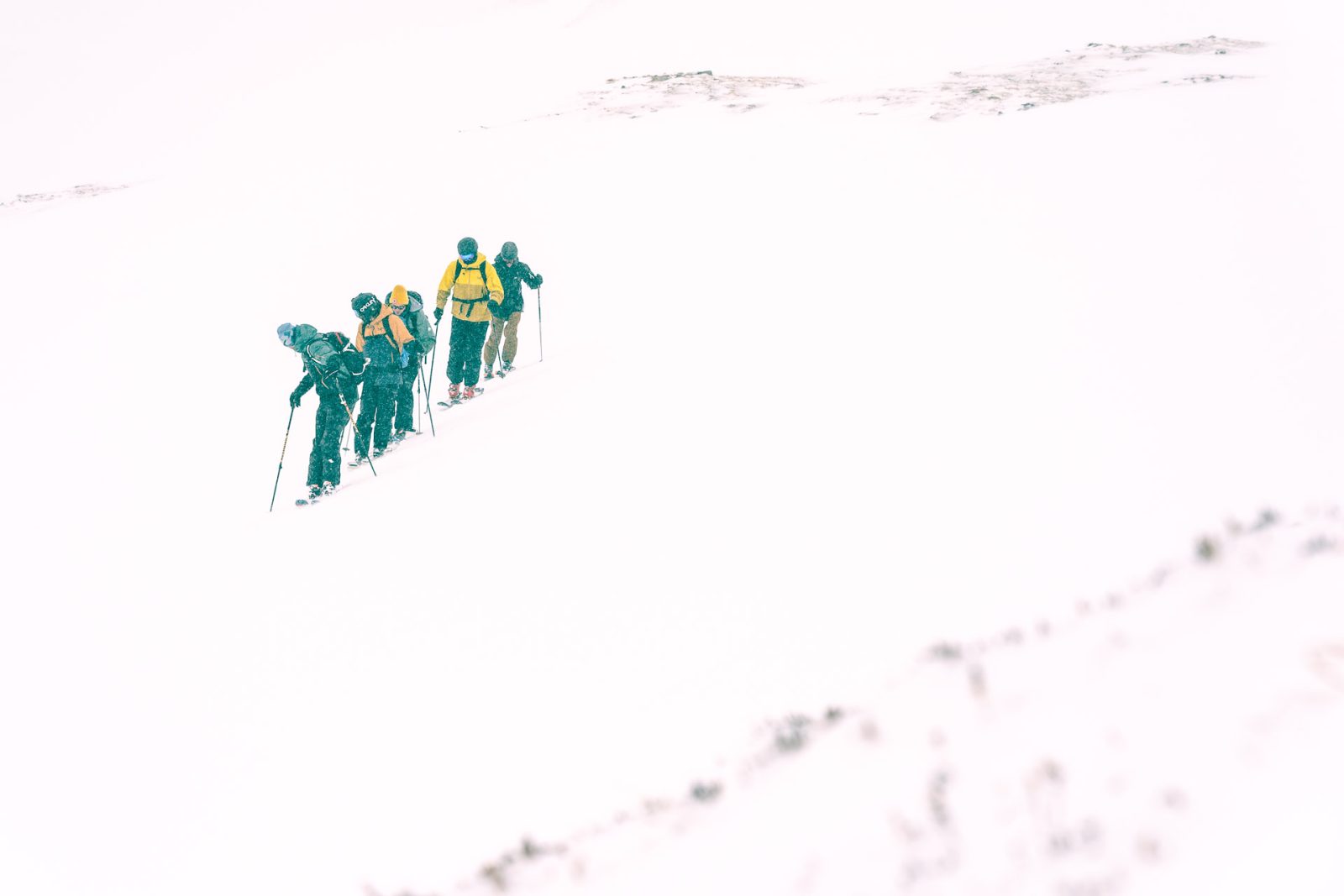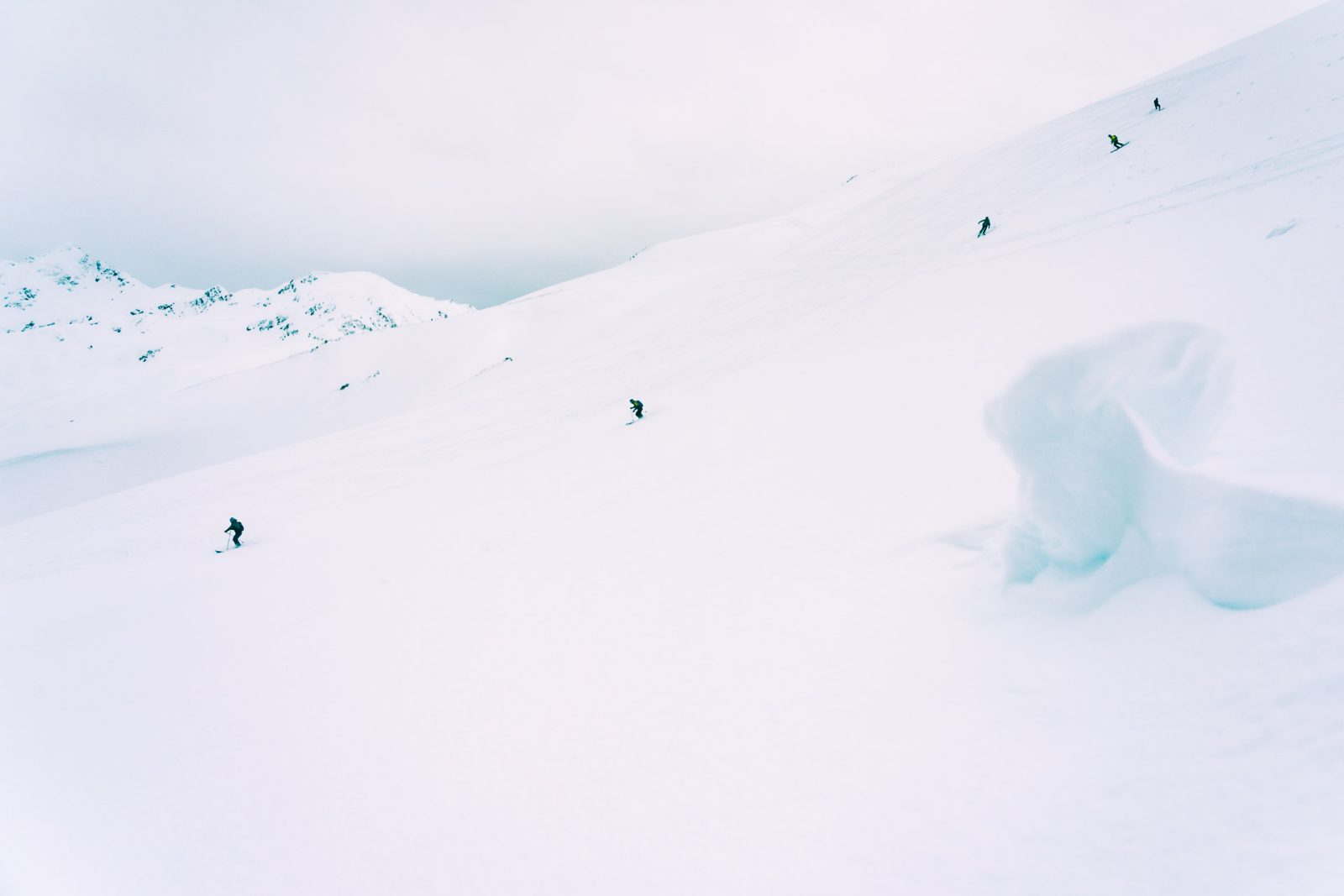The Arc’teryx Freeride Academy gathered world-class athletes and plenty of backcountry enthusiasts at the first weekend of February in the freeride haven of St. Anton am Arlberg for a couple of days of shared adventures, nice lines and good fun. The heart and soul of this event that offers interaction on multiple levels are undoubtedly the themed clinics from the Arc’teryx team of renowned mountain guides and snow sports athletes. It’s a unique offer that delivers an equally unique experience. I had the chance to join a clinic by freeride legend Eric Hjorleifson called “The How and Why of Ski Touring”. Here is the answer that I found on those questions.

Event News
HighlightArc’teryx Freeride Academy
You’re never done learning
What do you expect when you book a freeride clinic with Eric Hjorleifson at a place that is famous for deep powder and epic terrain like St. Anton? Exactly, an awesome day! What do you get on a warm, cloudy day with only a thin layer of fresh snow accompanying Hoji, the legend? Well, an awesome day! If you don’t believe me, maybe listen to one of the other participants, Emre who traveled to the Arc’teryx Freeride Academy from the Netherlands: “I had a great day. We didn’t have the best snow, but I still had one of the best days in my life. I learned so much!” And it wasn’t just him, it was all happy faces and laughter at the bar of the event’s Freeride Village following a less favorable day when simply assessing based on weather and snow conditions.
But let’s go back to the start. At 8 o’clock in the morning, the centre of St. Anton was busy with participants flocking to the Arc’teryx Freeride Village where all the academy courses for the day met. Around twenty different courses meant as many coaches from the athletes’ team, a few less mountain guides from the local mountain school of mc2alpin—every athlete who is not a mountain guide was accompanied by a certified mountain guide on their course—and a good hundred mountain enthusiasts eagerly awaiting their lectures. Every clinic saw a maximum of six participants, so a deep interaction with the coaches was guaranteed. On offer were classic freeride workshops about ski technique, line choice and terrain examination with the likes of Craig Murray or Coline Ballet-Baz, backcountry-specific clinics like the one I was attending and also fully specialized programs like “how to do an emergency bivouac”. Spirits were good despite a pretty dull grey sky: At least it wasn’t raining.
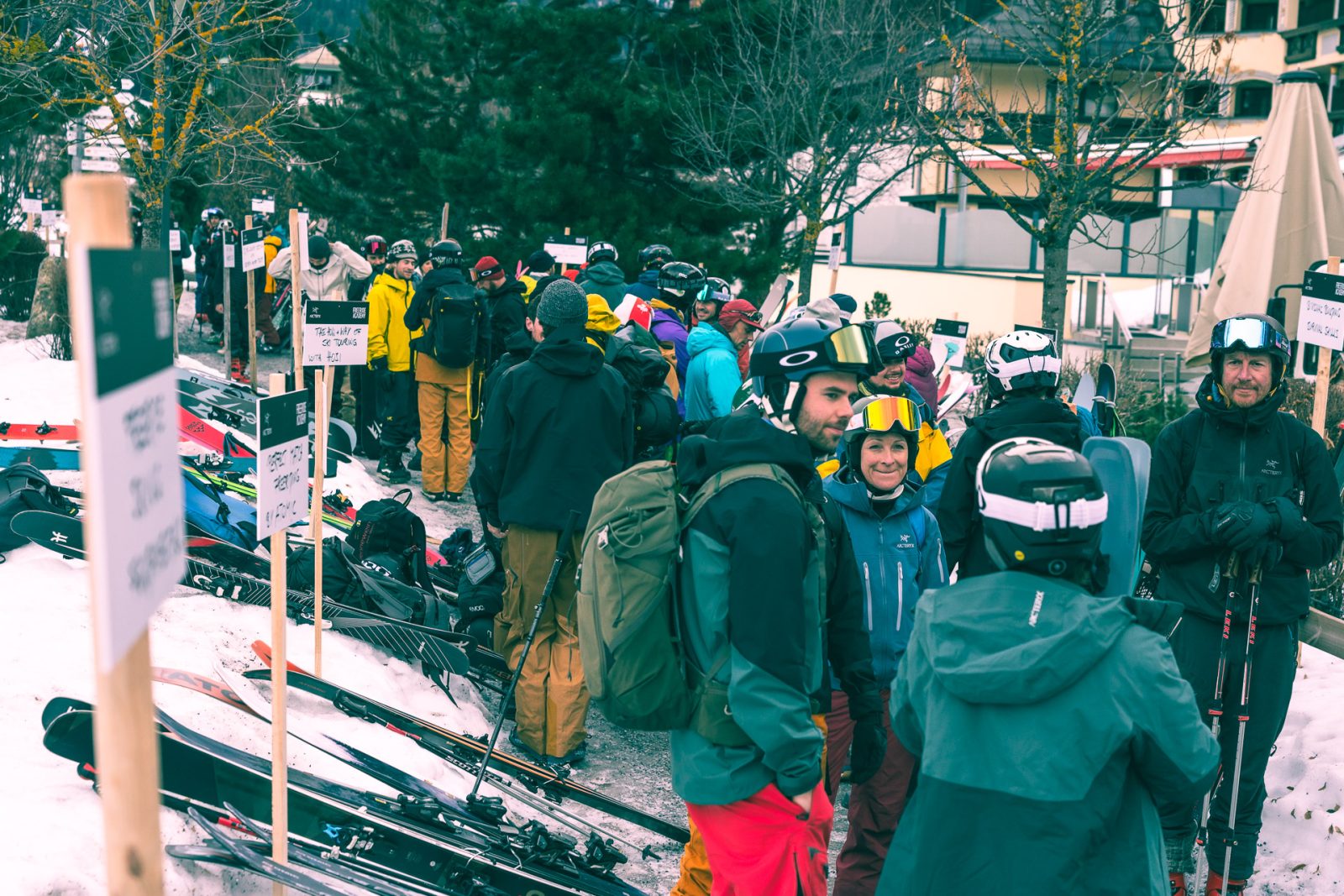

2. Eric’s group heads into the backcountry. Klaus Polzer
Our party consisted of coach Eric Hjorleifson, local mountain guide Benjamin, a mixed party of ski touring newbies from places as far as London and Amsterdam, and the event’s media crew consisting of a photographer, a filmer and their own dedicated mountain guide. After a first hello, everybody moved to the lifts and our group started its venture into the backcountry, at first by traveling the extensive lift and piste system of St. Anton and finally with a short traverse that quickly got us away from the ski resort infrastructure. Then the actual clinic started with an introduction from Eric. He basically discussed the day’s focus points, and as skiing conditions weren’t to their best, it was mutually agreed that the main points would be to profoundly discuss the general approach to ski touring and then practice some basic techniques particularly on the way up and in transition between ascending and descending.
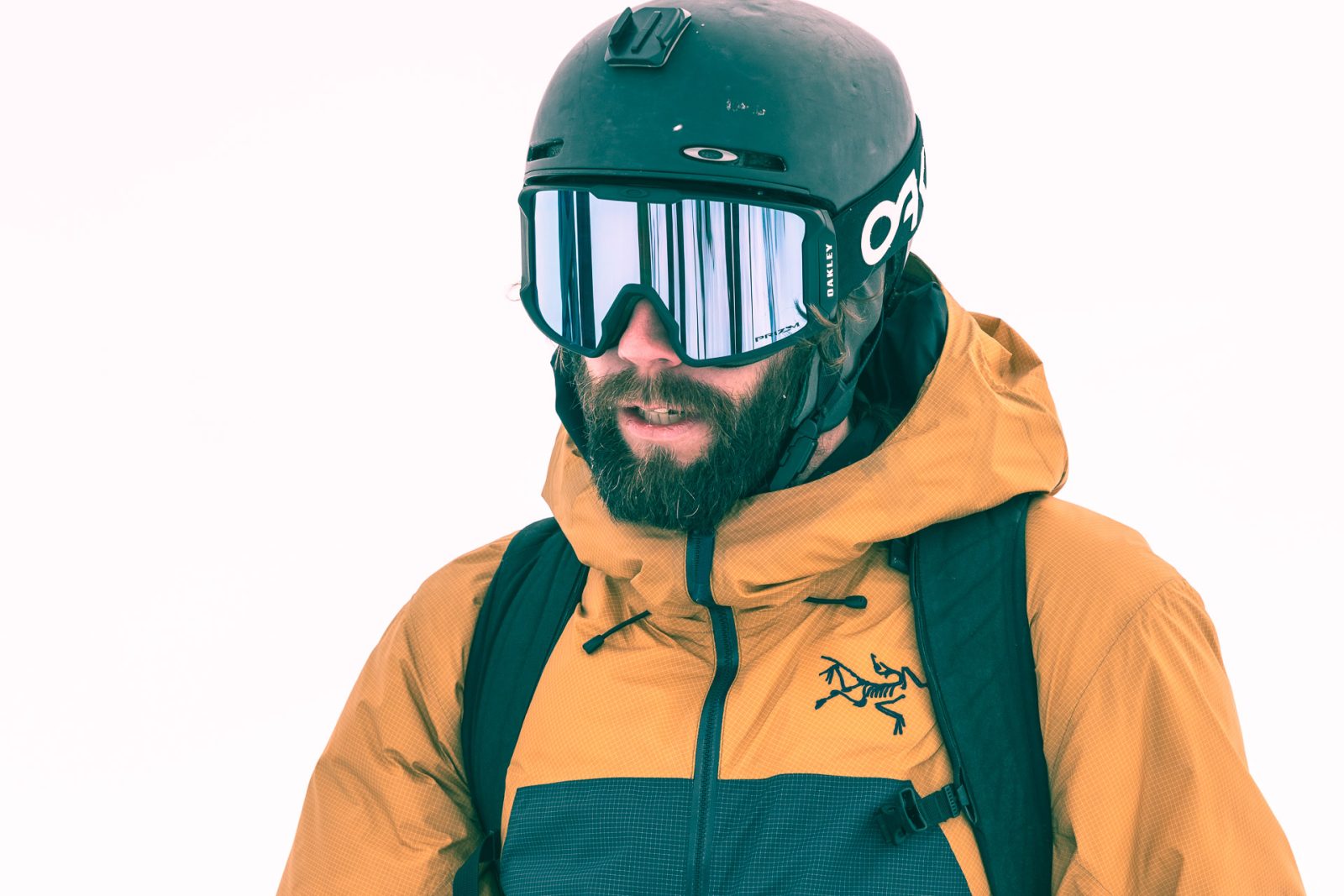
A central aspect was the philosophy of ski touring, as the clinic’s title was promising: “The How and Why of Ski Touring”. We’ll get into Eric’s philosophy a little bit deeper at the end of the article in a short interview, but let’s first continue with the day’s report. The first lesson started with the revelation that the work day had started much earlier for Eric than the actual clinic, namely at the time when the Arc’teryx athletes met with the local mountain guides two hours before the clinics started to discuss the plan for the day. Standing almost on top of the mountain, we comprehended this initial meeting and Eric as well as Benjamin couldn’t stress enough how valuable digital resources are which nowadays are freely available, particularly in the Alps. They explained how to sample information from avalanche reports, online weather and map services in order to find a suitable target for a day of ski touring. But the two experienced coaches were equally emphasizing the importance of constantly monitoring the surroundings in the backcountry to see whether the actual findings in reality matched with the predictions of the online reports. The main focus while moving about in the backcountry must be to keep open senses, evaluate all input and adapt your plan if necessary. This guideline set the tone for the day.
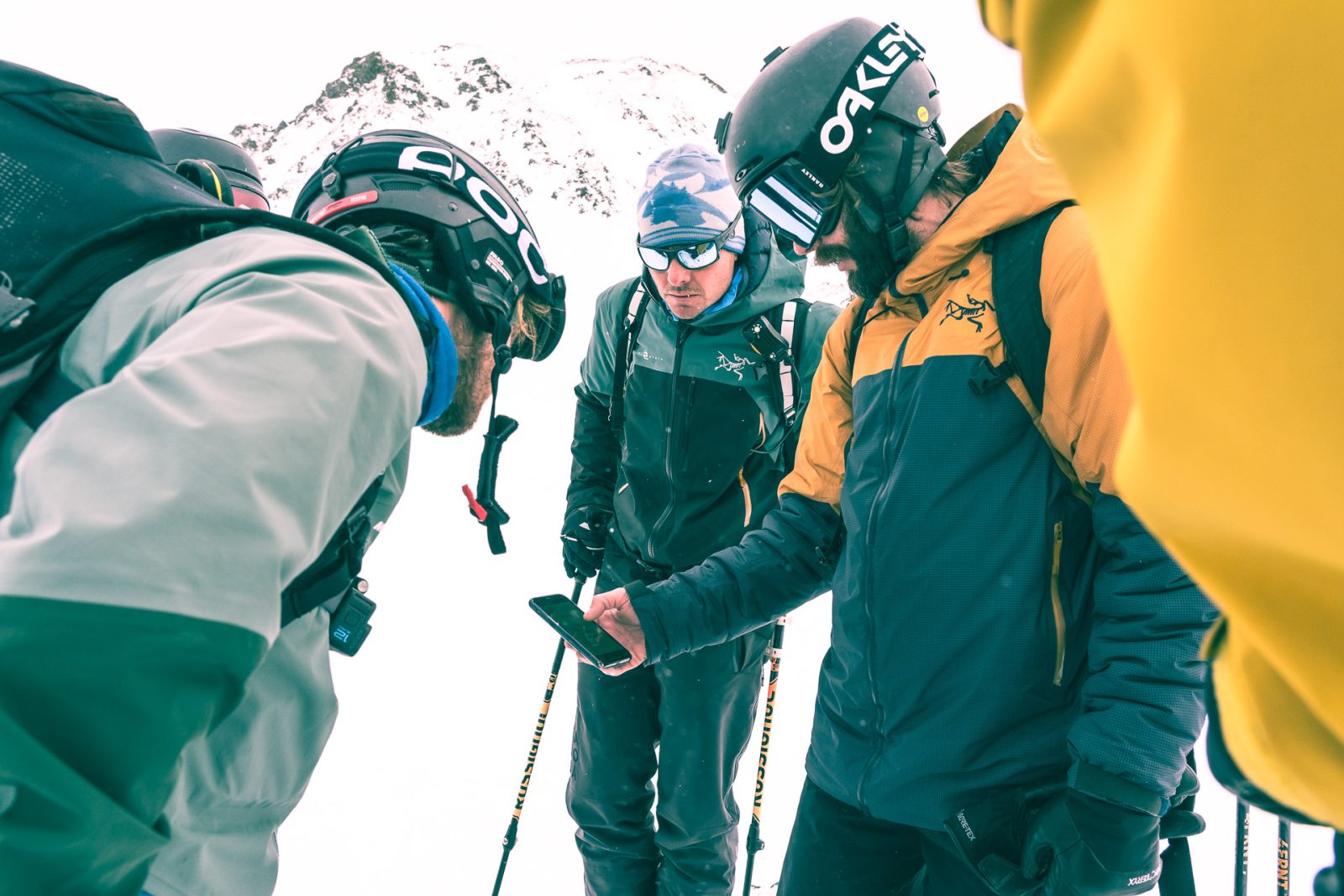

The other focus was on efficiency. It was amazing to see how swiftly a veteran ski tourer like Eric Hjorleifson not only moves up and down the mountain, but particularly transitions between the two. For example, following a traverse we found a place to put on skins and get ready for another climb. While most participants were still getting out of their skis and started to organize their stuff from their backpacks, Hoji would have been happy to start hiking already. Similarly in the preparation for the way down. It quickly became apparent that experience isn’t just key in the plaining of a tour, in the examination of terrain and skiable lines or in the act of skiing itself, there is also a lot to be learnt for the way up. And Eric didn’t hold back with essential tips like: Keep the gluey side of your skins free from snow! The same goes for goggles and gloves! Try to clean mechanical parts of your boots or bindings whenever you switch from hike mode to ski mode as much as possible from ice and snow in order to prevent them from freezing in! Sounds simple but when you are handling your stuff in a snowstorm, it’s much easier said than done.
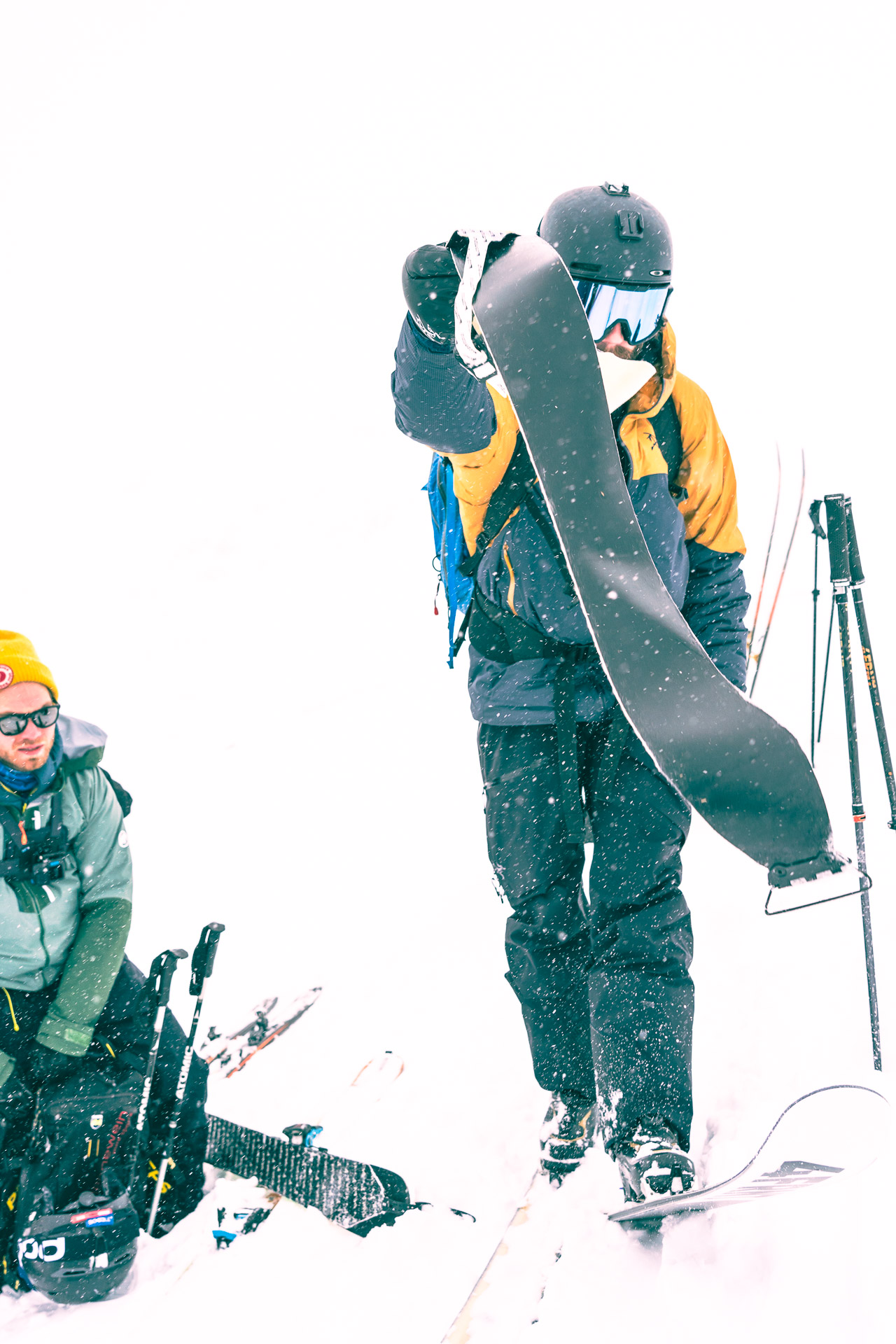
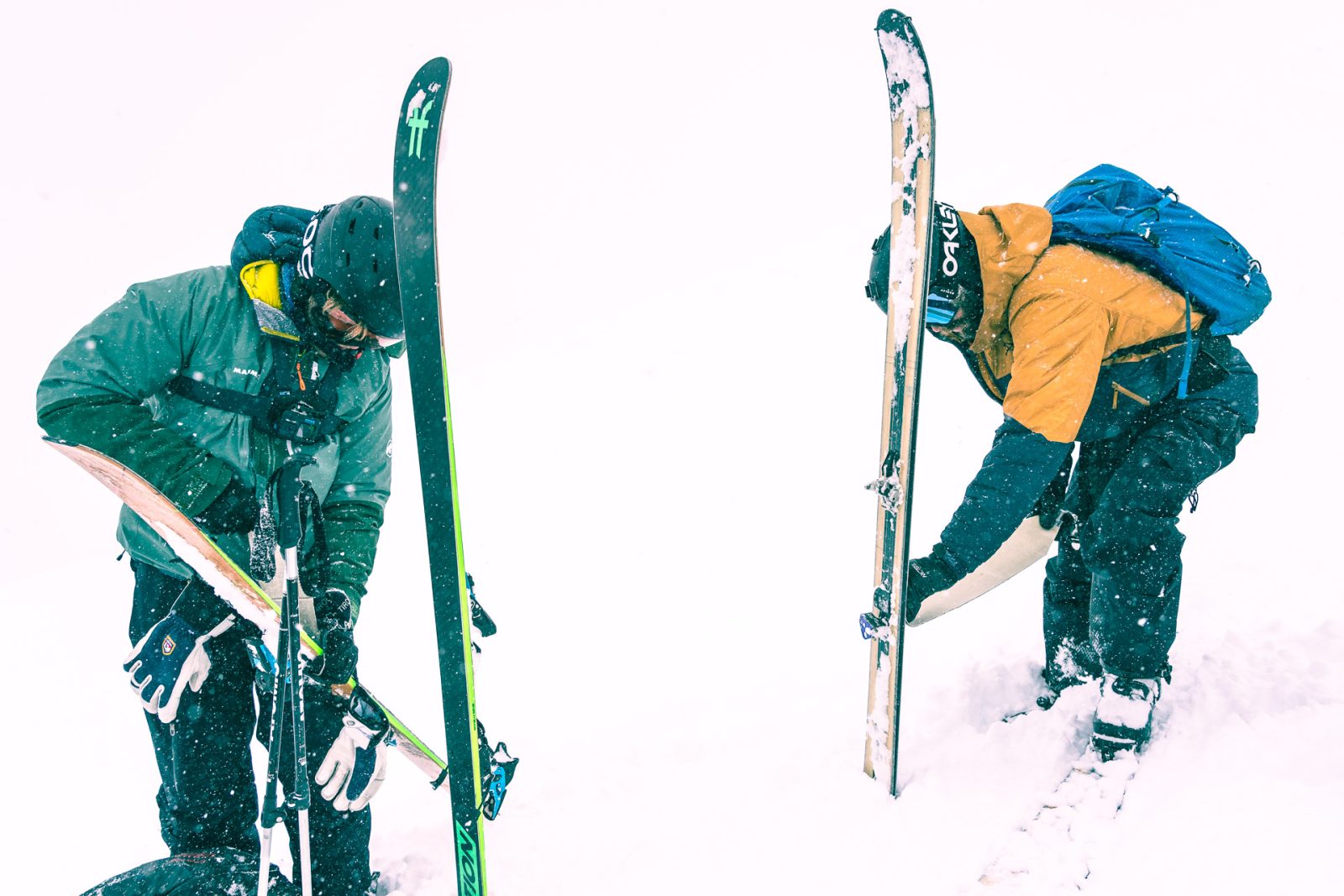
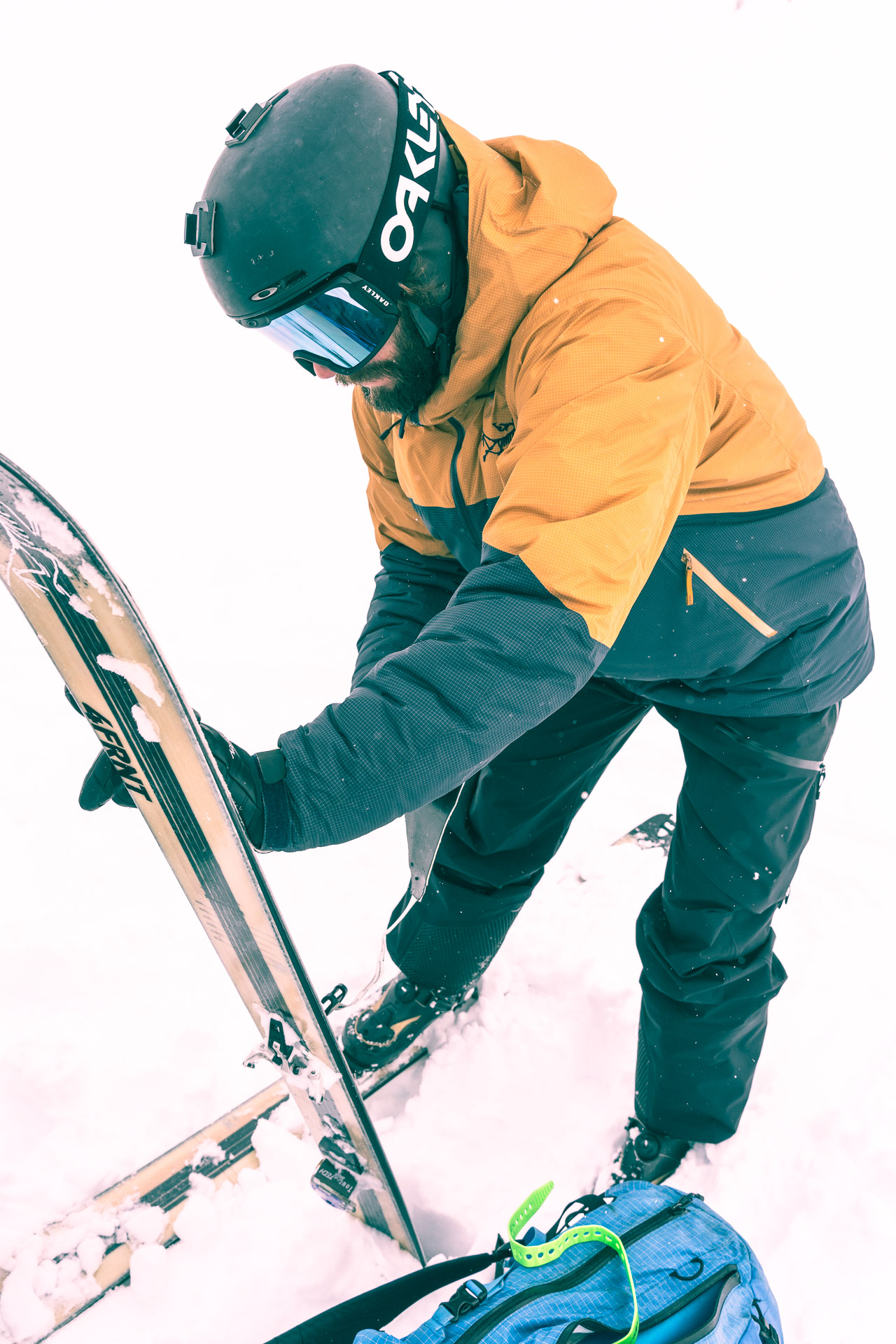
Another lecture was the famed kick-turn, the moment when you connect the straight parts of a classic zig-zag ascent track. It’s something that also takes more training than you first think, but Eric managed to break down the movement step by step so that at the end of the day everyone from the group got it done without breaking a leg. And miraculously we even ended up above a series of nicely pitched slopes with some good snow and no tracks to be seen. So we ended a tremendous day with a great backcountry run into one of the hidden valleys of the Arlberg ski area before even more clouds moved in. It was enough for the day anyway and all the participants were happy, but tired despite what looked like a rather easy ski tour. I asked Adam, a clinic participant from London, when I saw him sitting on the bus out of said valley with a facial expression that I couldn’t contextualize: “Tired?” “Oh man,” he replied with a smile, “what a day! I cannot remember that I have learnt so much in a day, ever. It was great, but it was also pretty exhausting. It keeps you on your toes all day long. Yes, I’m tired, but I couldn’t be happier!”
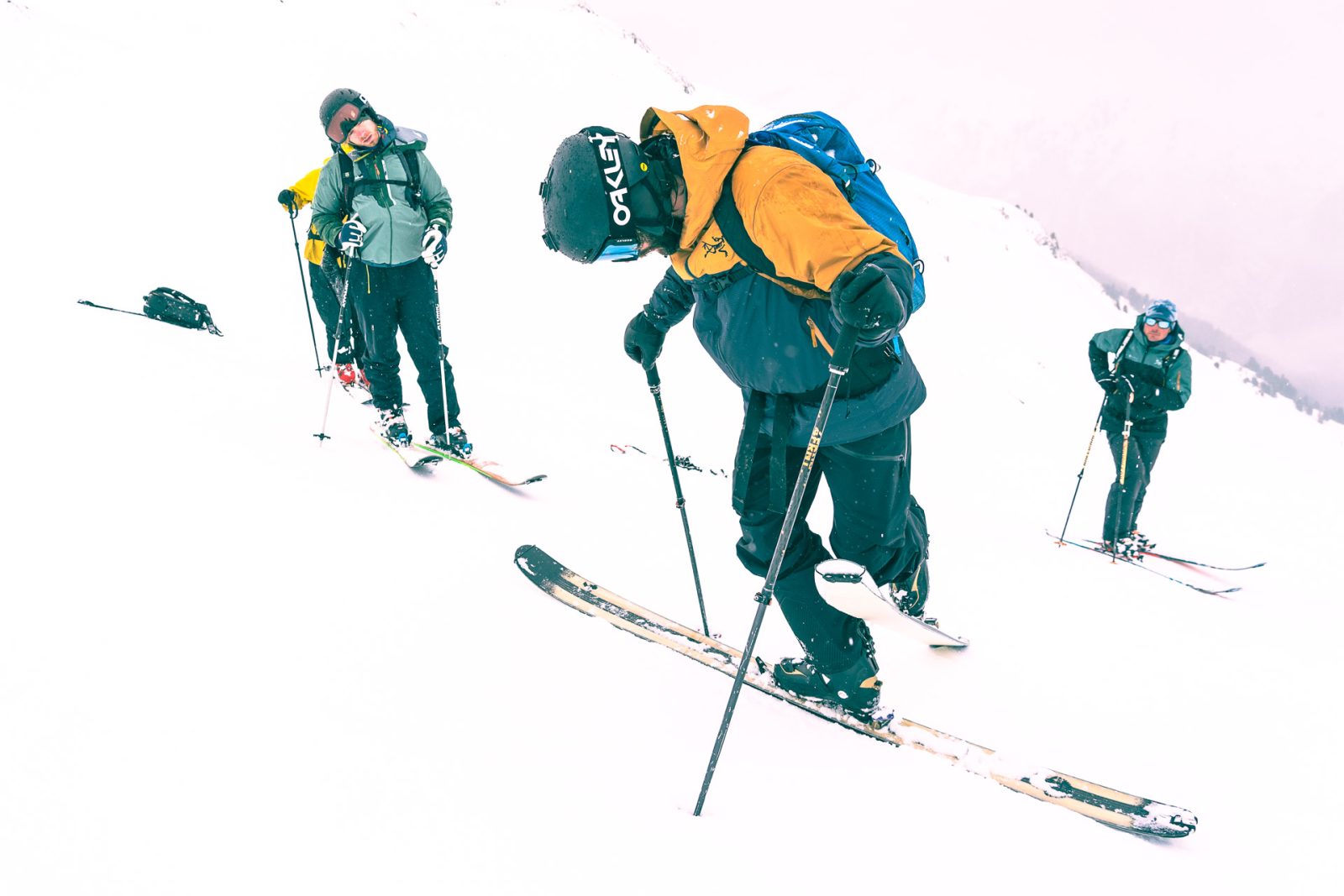
Klaus Polzer: Eric, what’s your perspective on the clinic today?
Eric Hjorleifson: We are here at the Arc’teryx Freeride Academy, we had a great group, a great local guide and adapted the program to the group’s abilities and what their expectations were. It turned out to be a pretty inexperienced group but they really wanted to learn. So we broke it down step by step to the beginning of the journey to becoming a backcountry skier. We started from the morning and pre-day routine and then to going up the mountain and assessing and adjusting all the information. We talked about some basic things concerning equipment and how to efficiently handle it and how important it is that you have equipment that really works in the backcountry. And then we also worked a bit on skinning techniques and kick turns and all that fun. Finally, we also got to practice skiing in tricky conditions a bit. And we did all of that in one day. It was definitely a good day, I would say.
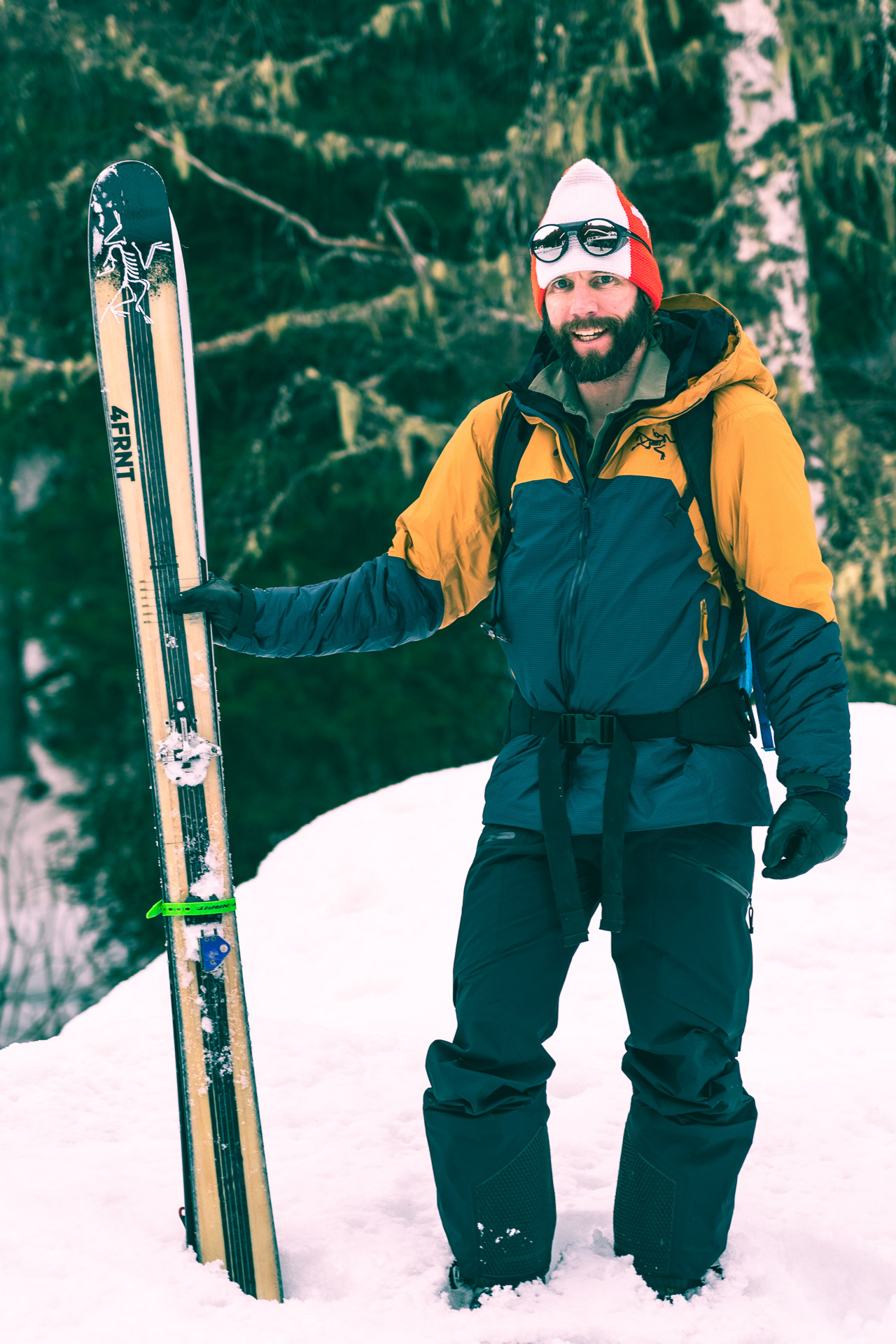
Klaus Polzer: What are the benefits of really going ski touring as opposed to resort freeriding?
Eric Hjorleifson: Well, I got into it back in the day in Canada, where we just don’t have the lift systems that exist in Europe. The few ski resorts we have, they’re very nice, but everyone has a powder hunger—a craze—and it’s a different world. Everyone has fat skis for many years, and they all want the powder. One of the reasons for me to start touring, of course, was I just wanted to get to fresh snow; and I didn’t want to be a one dimensional skier that is going down and can only traverse so far and sidestep and whatever. Really, the mountains are expansive and huge, and there’re so many places I could get to with my own power. It’s a different world, but I needed to be able to go vertically up and not just traverse and contour and down. From that I then came to really appreciate and enjoy the complete experience of ski touring where it’s more about the mountains and the environment and not just the runs that you’re doing.
After a very fortunate youth being an Alpine skier—and that’s how I got to where I am—after a while, especially in Canada, you know all those runs. You know the resorts, and you know there’s so much more. It was this evolution into having a more complete experience. And I really enjoy, personally, the learning aspect of it all. It adds so much to the activity of skiing when you have to start to really think about everything involved and not just which run I’m going to see next. So all of these factors. And it was parallel to the equipment that was coming, and I was pushing in that direction and helped in some way, I guess. But, yeah, all these factors led me in this direction. And I think it is—maybe it sounds a but cheesy—the best way to be a lifetime skier. It’s always evolving. To gain experience and to build up a bigger overview of skiing in the natural environment adds so much. You can never learn it all. You can never know it all. Every day is different. It adds that quest to the activity of skiing.
Klaus Polzer: Would you agree, even if you’re a really good freeride skier and you get into ski touring, that in a way you’re back to being a beginner? What’s your advice for someone who is really that good off-piste skier but has no big experience in the real backcountry?
Eric Hjorleifson: The activity of backcountry skiing is very experience-based and you have to have the right approach. It’s an important question, what that right approach is. I’d say, it’s excellent if you already have the skiing—the downhill skiing and the freeriding—and you’re able to deal with all kinds of conditions while going down. I mean, that’s a huge advantage. But you have to start at the beginning of uphill skiing, terrain management, route planning, weather, avalanches… There’re so many factors. I mean, this event is exactly that. That’s the Arc’teryx Freeride Academy, a bunch of pro athletes and local guides. It’s an opportunity for people of all abilities, even if they’re quite advanced, to maybe find the right activity, the right clinic. To go out with mountain guides or ski guides is such a resource! In the modern times—we talked about it a bit today—the activity of a guide, the role of the guide has really evolved. It has been for a while in Canada, but I think it’s similar here now, where mountain guides are more of a mentor and they’re providing an education with each experience, not just taking you out and you’re having a great time because you’re with someone who knows.
That still exists, and that’s great. But there’s a lot of opportunities. If you can afford it, it’s really, really valuable to gain experience while going out with working professionals who have all the training plus their lifetime of experience and are willing to pass it on to you. My whole journey of backcountry skiing started with mentorship of my ski friends and partners who, coincidentally, were much older than me and already had quite a bit of experience, and they passed that on to me. Then, of course, my professional career as a freeride athlete allowed me to constantly work with mountain guides from all over the place and I was always trying to really be part of their conversation, asking them questions, adding in some of my own observations or experiences. At this stage now, after 20 years, I feel like, okay, I didn’t do the guide training and I don’t have the pin or the badge, but I am a resource to them as well, and the good guides recognize that, and we work very well together. Today was a perfect example. If you can go with experienced people, you should do this as much as you can, if you have to pay for it or not.
